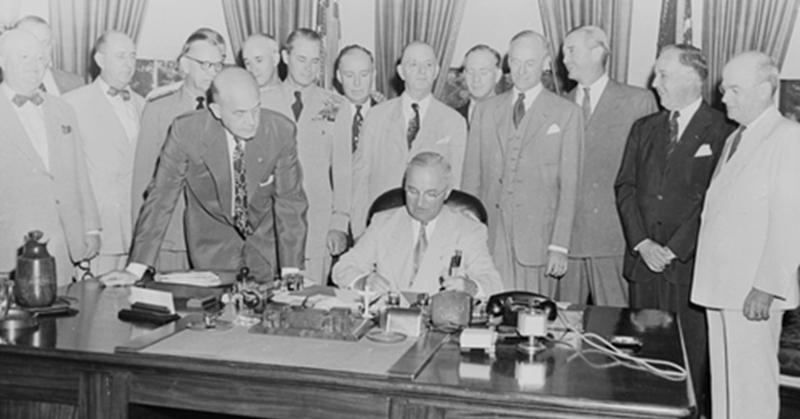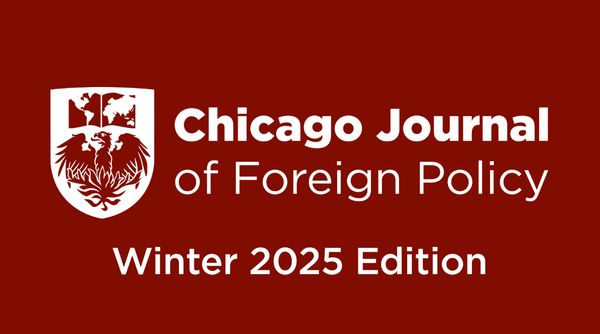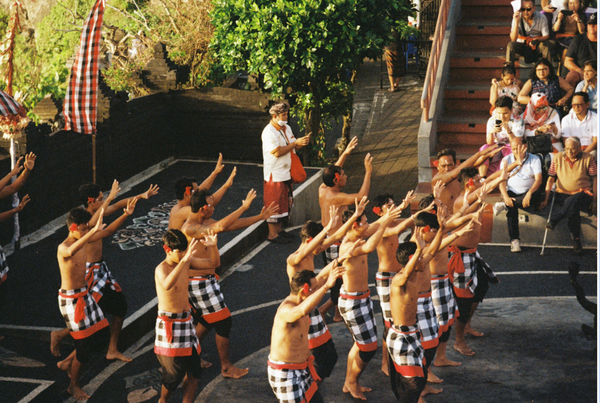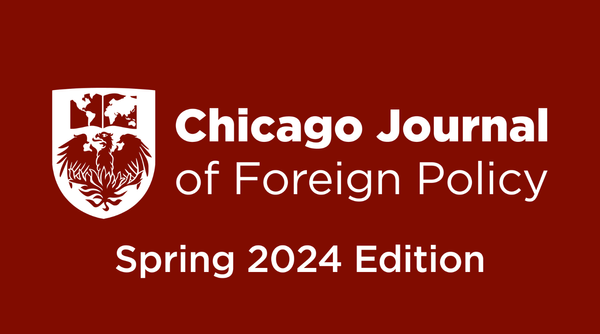Intelligence Community of the Cold War Era

By Sophie Polgar, UNC 2022
Though the intelligence community played an infamous role in the Cold War, the United States was not always known for having a strong espionage program. The U.S. was actually the “last of the major powers to establish a civilian intelligence agency.” This paper will examine the IC’s organization, process, and product from 1947-1962. Given its mission set, the IC had an effective organization that centralized the flow of information. However, the processes conducted by the CIA were an overextension of their newfound power. Moreover, the advancement of intelligence products enabled a higher degree of analysis. Overall, the early Cold War years laid the basis for a more powerful IC that sometimes overstepped its bounds in its process.
To begin with, the creation of the National Security Council, Central Intelligence Agency, and the Department of Defense channeled information in a more efficient structure for the IC. The Eberstadt Report of 1945 initiated this functional change: it recommended a more coordinated intelligence function and military unification. The National Security Act of 1947 put this proposal into action and the DoD was organized into separate departments for intelligence in the Air Force, Navy, and Army. Above this tactical level, the National Security Council (NSC) aligned civilian and military national security policy for the President, collecting information and sending it upwards. Most notably, the CIA was established and tasked with coordinating issues of national security intelligence under the NSC. The CIA played a prominent role in foreign intelligence activities in the Cold War, which freed the military to focus on its own specific intelligence functions. Essentially, the development of military and non-military intelligence allowed agents to specialize in their respective areas. Furthermore, when formulating and implementing foreign policy, the President had access to two pools of information: the CIA through the NSC and the Department of Defense.
As time went on, the separation of intelligence functions came with some structural challenges. For instance, the Dulles Jackson Correa Report of 1949 states: “where two or more agencies are doing similar work, the one best equipped ought to do the job and the others drop out or efforts be coordinated.” This ambiguous language leaves room for competition within the intelligence community. It does not direct how to measure the agency best equipped for a job, or how to resolve disputes concerning roles. On the other hand, competition can be healthy to drive agencies to produce better products. This distinction countered groupthink and encouraged diversity of opinions. Though agencies would require more direction, the structures of the NSC and CIA brought positive changes. After the National Security Act of 1947, the organizational apparatus of the Cold War intelligence community changed for the better.
In the realm of intelligence processes, the IC focused their operations on aggressively combating the spread of Communism with the CIA. Due to this conflict, the CIA’s use of covert operations went beyond the agency’s intended design. In fact, General Counsel of the CIA Houston reported that their range of operations were “an unwarranted extension of the functions authorized.” He reported to DCI Hillenkoetter that the CIA executed special operations for political effect in Communist countries, including raids, sabotage, and subversion. During the Cold War years, these covert (or special) operations ran rampant. Moreover, the public and the government were largely unaware of their effects. In 1949, Congress permitted the use of funds for clandestine activities with only a DCI voucher. Consequently, the CIA utilized funds with no Congressional oversight. In hindsight, many of these processes were an overreach of power. During the Truman Administration, secret funds supported Italy’s pro-Western Christian Democratic Party in their campaign against the communists. Furthermore, the CIA conducted ambitious secret operations in Iran and Guatemala to install pro-Western governments. At the time, the IC justified foreign election intervention as preventive direct action. As the General Counsel himself acknowledged later, these processes crossed the line of what he deemed as acceptable practices.
Lastly, advancements in technology created new intelligence products that gave the United States an upper hand. In the field of aerial reconnaissance, the American intelligence community overcame gaps that HUMINT could not fill. In the 1950s, President Dwight Eisenhower directed the CIA to develop the U-2 aircraft, A-12 aircraft, and the Corona satellites. These versatile spy satellites strengthened photographic capabilities throughout the Cold War. Aerial satellites did not carry the same risks as HUMINT; they also removed the dependence on unreliable human sources. Most famously, aerial reconnaissance signaled early warning for Soviet missile deployment in Cuba. According to the CIA’s own Fact Book, intelligence products allowed the IC to shift from “sophisticated guesswork about Soviet capabilities to evidence-based analysis.”
When examining this era, the intelligence community experienced a shakeup of organization that facilitated more information flow. However, the newly created CIA used their authority to accomplish covert operations outside of their designated scope. On a final note, aerial reconnaissance products furthered intelligence collection and analysis. The organization, process, and products of the Cold War Era stood out from past American intelligence efforts. The ramifications of the intelligence community’s role in the Cold War and of the CIA’s covert operations are felt to this day.
Bibliography
Dulles-Jackson-Correa Report. N.p.: Central Intelligence Agency, 1949. https://archive.org/details/RELEASEOFTHEDULLES-JACKSON-CORREAREPORTRDP86B00269R000500040001-1.
General Counsel Houston. Memorandum to DCI Hillenkoetter, memorandum, “241. Memorandum From the General Counsel of the Central Intelligence Agency (Houston) to Director of Central Intelligence Hillenkoetter,” n.d. Foreign Relations of the United States,1945–1950, Emergence of the Intelligences Establishment.
Johnson, Loch K., and James J. Wirtz. Intelligence: The Secret World of Spies : an Anthology. 4th ed. Oxford: Oxford University Press, 2015.
“Note on U.S. Covert Action Programs.” In Indonesia; Malaysia-Singapore; Philippines, edited by Daniel J. Lawler and Erin R. Mahan. Vol. XXVI of Foreign Relations of the United States, 1964–1968. 2010. Accessed September 18, 2021. https://history.state.gov/historicaldocuments/frus1964-68v26/actionsstatement.
Notes from Our Attic: A Curator’s Pocket History of the CIA. Washington, DC: Central Intelligence Agency, 2014. Digital file.
Pringle, Robert W. “Central Intelligence Agency.” In Encyclopedia Britannica, edited by Encyclopedia Britannica. Last modified 2021. Accessed September 18, 2021. https://www.britannica.com/topic/Central-Intelligence-Agency#ref233659.





